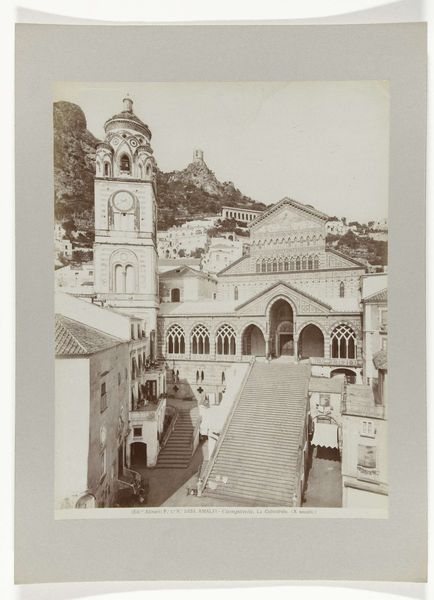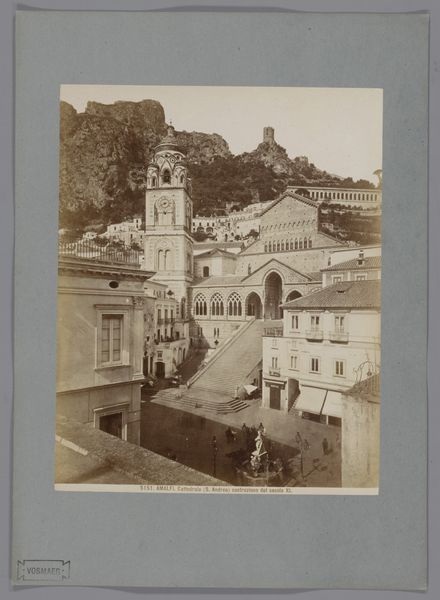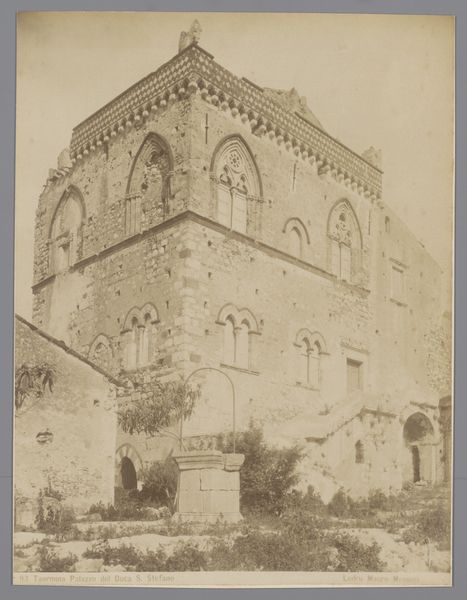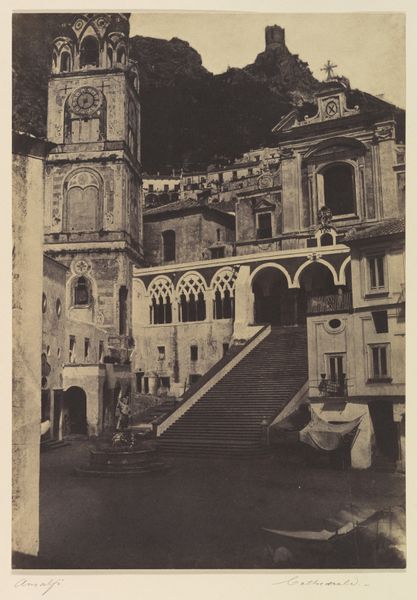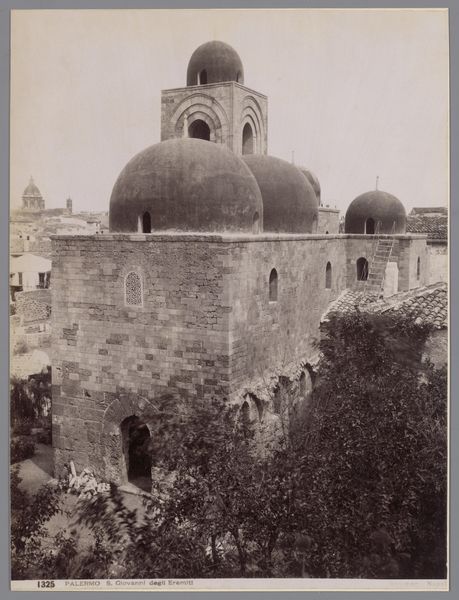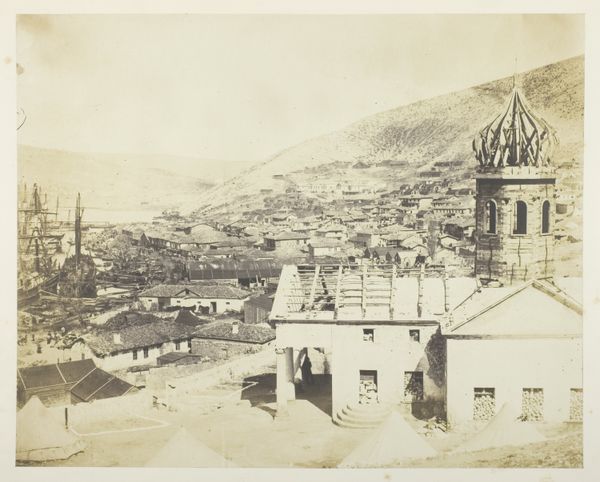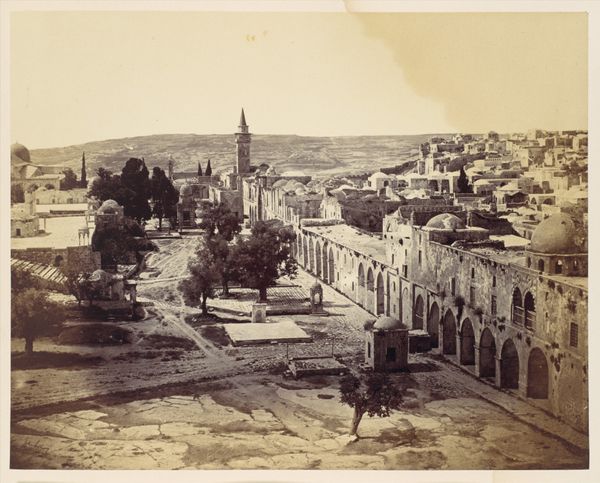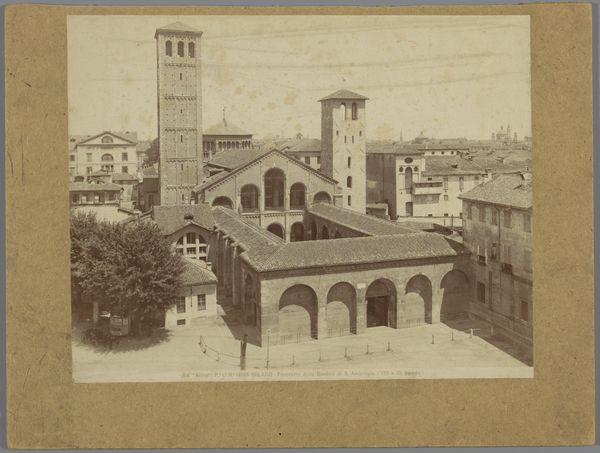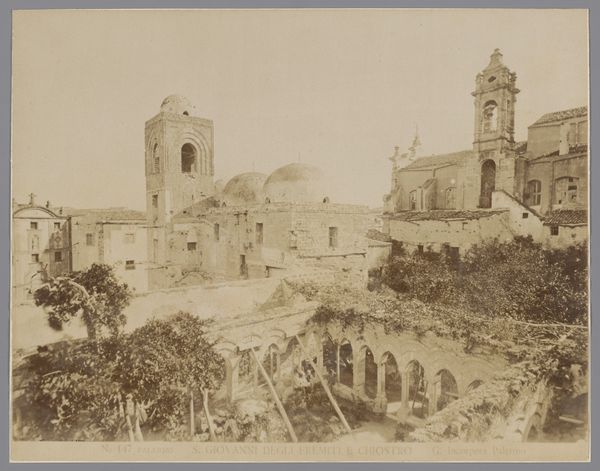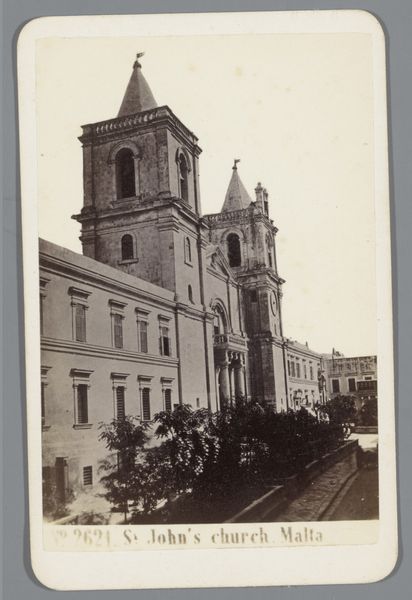
print, photography, architecture
# print
#
landscape
#
photography
#
19th century
#
cityscape
#
italian-renaissance
#
architecture
Dimensions: height 250 mm, width 196 mm
Copyright: Rijks Museum: Open Domain
Editor: This is Giacomo Brogi's photograph, "Kathedraal van Amalfi," taken sometime between 1864 and 1881. It's a fascinating cityscape, this photographic print, capturing the cathedral dramatically. I am intrigued by the way the photo shows both grand architecture and the everyday lives around it. What stands out to you? Curator: This piece presents an interesting tension between the intended grandeur of the cathedral and its integration into the mundane fabric of Amalfi. Consider the labour involved. Who quarried the stone, carved the facades? Photography in this era relied heavily on skilled technicians too – the labor to produce, develop and print this image is equally interesting as the subject of the image itself. The Cathedral’s elevated position almost masks its dependency on the economy surrounding its physical location and construction. What about that relationship interests you? Editor: I guess I hadn’t considered that much labour went into what looks like such a simple photograph! Thinking about it now, the photo gives us hints of the economy in the 19th century as being both grand, with religious architecture, and also work-based with trades and skilled labor being so relevant in daily life. Did photography like this influence the Italian economy? Curator: It's more likely a reflection than a direct influence. Brogi's photographs were commodities, part of a burgeoning tourist trade. This image became another artifact for consumption, an accessible ‘experience’ of a far-away place without experiencing that place at all! Perhaps even solidifying preconceived notions about what these tourists expected from Italy itself. Editor: So, this photograph isn’t just a record of a beautiful building. It shows 19th-century Italian culture and how imagery fed a rising tourism industry, almost as objects! Curator: Exactly. By considering photography's function as an economic artifact, and labor within the image's manufacture, we reveal deeper social dynamics at play. The building and labor within create it together to tell an interesting story of the past.
Comments
No comments
Be the first to comment and join the conversation on the ultimate creative platform.
